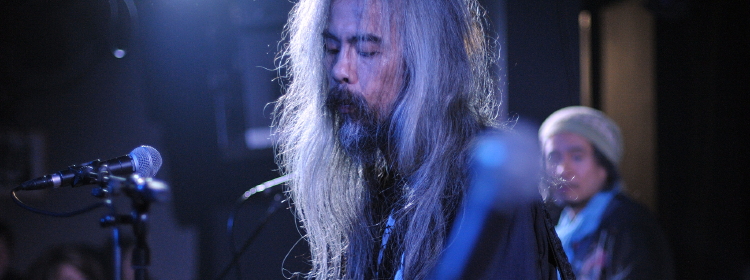
Festival Soy 2008
And may music forever win out over the rain : SOY at Le Pannonica
Le Pannonica, Nantes, Sunday, November 2nd 2008
Those of us with enough chutzpah to hold out to the end of Yamoy’s 4-day new music marathon last week, through rain and through more rain, through the good, the great, and the just plain so-so, were in for a farewell that would somehow manage leave us hungry for even more : SOY Festival 2009, anyone ? On the heels of Chris Corsano and Mick Flower’s raga-style free-for-all just a few blocks away, the final chapter of this year’s Soy Festival at the Pannonica typified the association’s penchant for providing a little something for everyone—provided, of course, that that something is not what the people of Nantes might ordinarily hope to hear on a Sunday night… or any other night, for that matter. Retrouvez cet article en version française.
With opening group Stearica, a power-chord-pummeling, Turin-based trio, the festival seemed to offer an obligatory nod to the surviving faction of head-bobbing post-rock enthusiasts that still make an appearance at every large-scale musical event in the city. And yet, appearances—even musical ones—can sometimes be deceiving. Setting aside their somewhat surprising endorsement by Acid Mothers Temple, who have invited them aboard their touring spaceship for the next few months, there is definitely something slightly refreshing about their take on this slowly ossifying art form. And it’s not just because they’re from Italy, or because they throw samples of spoken text and bits of feedback into the guitar-bass-percussion mix every now and again.
Stearica manage to play very fast and very loud while remaining very together.
Like the most venerated musicians in the genre, Stearica manage to play very fast and very loud while remaining very together. But there are some moments (and these are the most interesting ones) when the well-oiled machine of mathematical precision seems to malfunction slightly—a pause that rings out a little too long, a bass line that collapses into a floor-vibrating roar, a drum fill that seems to strain against the Cartesian forward-march with a cry for emancipation. Stearica seem always on the verge of an explosion that never comes—and it is perhaps this expectation, more than anything else, that keeps us listening.
No Age : Back from the Future, Back from the Past
Next up, Dean Spunt and Randy Randall of No Age, who modestly introduce themselves to the audience as just another “rock and roll band.” Which is probably the best way to describe this duo from sunny Los Angeles, not because they are just another rock band, but because they seem to distil the principles of rock and roll into such a compact little formula : Dean on guitar, Randy on drums and screaming vocals (barely audible above the guitar and drums) and a dozen 2-minute verse-chorus anthems hammered out at turbo speed.
There is nothing all that {remarkable} about No Age’s music; and that, I think, is precisely what makes it so charming.
Though their work with home-recorded samples and guitar effects on Weirdo Rippers and Nouns have led some critics to tack on words like “experimental” or “noise rock,” this impression falls away somewhat during No Age’s live set—asides from the loudness factor, of course. No, there is nothing all that remarkable about No Age’s music ; and that, I think, is precisely what makes it so charming. People who don’t write them off right away as “just another” radio-friendly alternative rock band will realize that they are really not that friendly to the ears at all, and that their upbeat refrains and positive attitude are less a sign of their being “consensual” than hand-me-downs from the pimply punk idols of their youth : Black Flag, Nation of Ulysses, maybe even The Adolescents. No Age. Reminding us that the simplicity and exuberance of true punk rock—despite the passing of the decades—is still alive and well.
Defying Gravity with Acid Mothers Temple
Acid Mothers Temple were the group that the majority of the people at the Pannonica that night were there to see, and to say that they did not deliver is just as unimaginable as comparing them to any other of the groups at the Soy Festival this year. Though they have only been around since 1995, this Japanese collective has already racked up more albums, revolving members and splinter projects than most of the psychedelic space-rock bands that actually date back to the late 60’s and early 70’s. Which is why it is tempting to forgo a socio-historical analysis completely and join the group in believing that they are actually from outer space. On the collective’s website, Acid Mothers Temple & the Melting Paraiso U.F.O (one of the group’s nine most prominent offshoots, and the one appearing before us tonight) provide as fitting an introduction to their music as any : “What you are about to experience is ass kickin’ butt whippin’ far out drop dead cool music from another solar system when the ancient gods still ruled the earth !”
A description that becomes a whole lot less confusing once we see Acid Mothers Temple on stage : four elder statesmen with monumentally long hair in various gradations from black to white, bouncing from side to side as though they couldn’t possibly be affected by so worldly a thing as gravitational pull. Hiding behind a knee-length mustache and beard, Higashi Hiroshi summons a few astral tremolos from a synth as bassist Tsuyama Atsushi and drummer Shimura Koji lay down perhaps one of the fuzziest and beefiest rhythm sections this side of the galaxy has ever heard. Lead guitarist Kawabata Makoto, looking like Slash’s Japanese alter ego, shreds his guitar to pieces as what begins as a plodding succession of repeated phrases escalates into a mad dash up Mount Olympus.
For some people, Acid Mothers Temple’s music is a religious experience. For others, it is simply “too much.”
For some people, Acid Mothers Temple’s music is a religious experience. For others, it is simply “too much.” But there are also the people who, like the musicians themselves, seem to appreciate its fine line between high seriousness and parody, eastern spirituality and post-colonial fantasy. The “eastern” element of their music extends beyond their occasional use of a Japanese flute, or a guitar riff drawn straight out of a Bollywood soundtrack—it permeates the very fiber of their song structures. But what is so fascinating about Acid Mothers Temple is that we can never tell whether they are creating honest-to-god “Buddhist music” (as they claim), or throwing our own eastern fetishisms right back in our faces. When Tsuyama Atsushi steps up to the mic and begins humming “Om” like a Tibetan monk in a cartoon levitation rite, we cannot help asking ourselves : is he poking fun at himself or poking fun at us ?
Our only regret is that Tsuyama Atsushi, and the rest of his bandmates, were too busy noodling their way up to the heavens to sit down for a Q & A.
Retrouvez cet article en version française.
Emilie Friedlander
Photos : Rémi Goulet
Cool tunes :
 No Age, Nouns, Sub Pop, 2008.
No Age, Nouns, Sub Pop, 2008.
 Acid Mothers Temple & the Melting Paraiso U.F.O, Glorify Astrological Martyrdom, Important Records, 2008.
Acid Mothers Temple & the Melting Paraiso U.F.O, Glorify Astrological Martyrdom, Important Records, 2008.
 Acid Mothers Temple & the Melting Paraiso U.F.O, Cometary Orbital Drive, Bam Balam Records, 2008.
Acid Mothers Temple & the Melting Paraiso U.F.O, Cometary Orbital Drive, Bam Balam Records, 2008.
 Acid Mothers Temple & the Melting Paraiso U.F.O, Interstellar Guru And Zero, Homeopathic, 2008.
Acid Mothers Temple & the Melting Paraiso U.F.O, Interstellar Guru And Zero, Homeopathic, 2008.
Même auteur
Bloc-Notes
-
«  Chasse fermée  » remporte le prix du public au palmarès d’Univerciné 2013
-
Hellfest 2013 : Fragil prend refuge dans le nid des enfers
-
La 7ème Vague ouvre le bal des festivals
-
Le sculpteur Yonnais Pierre Augustin Marboeuf expose à Nantes pour la première fois
-
Edito du 12 avril 2013 : du fond des abysses


 Le dernier numéro
Le dernier numéro
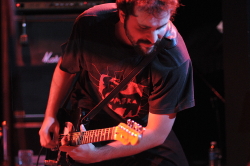
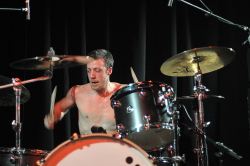
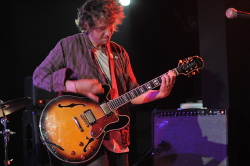
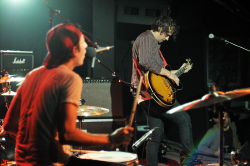
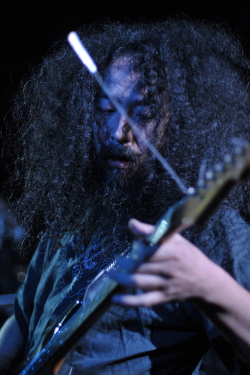
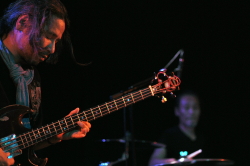
 Haut de la page
Haut de la page







